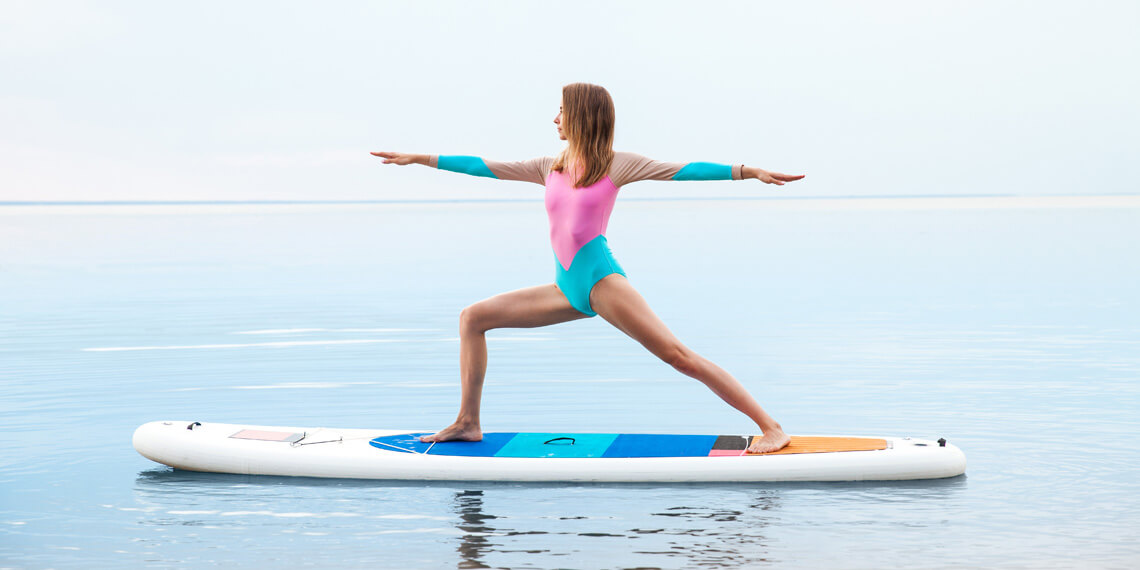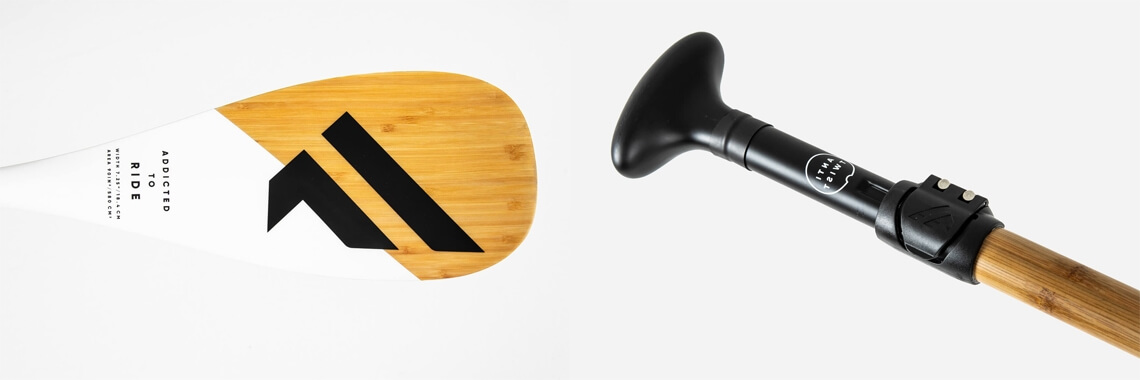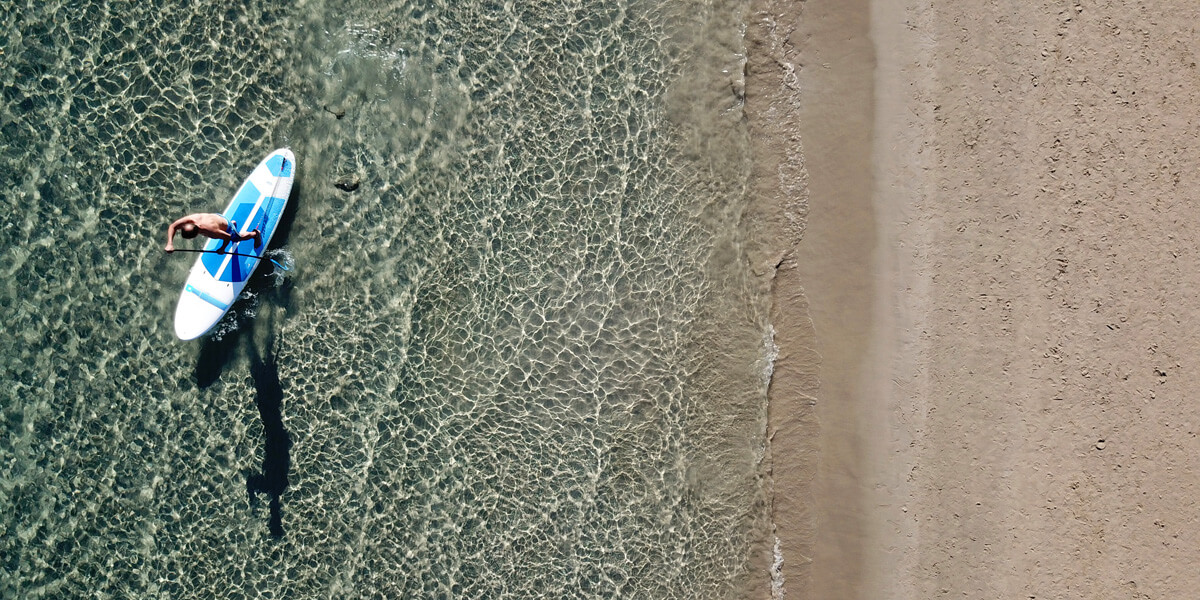How to choose your stand-up paddleboard? Know how to make the right choice when buying a rigid or inflatable SUP.
Stand-up paddleboarding (SUP) is a very versatile water sport. Modern SUP boards are light, strong, and incorporate high-tech manufacturing materials and techniques.
They also come in many different sizes, shapes, and materials and can be used at sea, in lakes, rivers, dams, and almost any body of water.
The first thing you'll need to ask yourself is what you want to do on your SUP board and your experience level.
Are you an intermediate or advanced surfer or a newbie to the sport seeking a board that paddles easily?
Do you plan to catch waves, race, do yoga, go fishing, enter downwind challenges, participate in long-distance touring competitions, or want to cruise around calm, flat waters?
As a general rule of thumb, remember that the more volume the board has, the more it will float and the more stable it will be. But it will also be less responsive and maneuverable.
Take a look at a stand-up paddle board size chart for standard recreational models.
To convert kilograms (kg) to pounds (lb), note that 1 kilogram equals 2.2 pounds. To convert meters (m) to feet (ft), note that 1 meter equals 3.3 feet.
| Rider's Weight (lb) | Advanced SUP (feet/inches) | Beginner SUP (feet/inches) |
|---|---|---|
| 120-150 |
Length: 9' - 10'6'' Width: 26'' - 26.5'' Thickness: 3¾'' - 3⅞'' |
Length: 10'6'' - 11' Width: 27'' - 27½'' Thickness: 3⅞'' - 4¼'' |
| 160-190 |
Length: 9'6'' - 10'6'' Width: 27'' - 28'' Thickness: 4'' - 4¼'' |
Length: 11' Width: 28'' - 29'' Thickness: 4⅜'' - 4⅝'' |
| 200-230 |
Length: 10' - 11' Width: 28'' - 28½'' Thickness: 4'' - 4¾'' |
Length: 11' - 11'6'' Width: 29½'' - 30½'' Thickness: 4¾'' |
| 240-270 |
Length: 11' - 11'6'' Width: 29½'' - 31½'' Thickness: 4⅞'' - 5'' |
Length: 11'6'' - 12' Width: 32'' - 33'' Thickness: 4⅞'' - 5'' |
| 280 + |
Length: 12' Width: 32'' Thickness: 5'' |
Length: 12' Width: 33'' Thickness: 5'' |
Types of Stand-Up Paddleboards
From a construction perspective, you'll find two types of SUPs - rigid and inflatable stand-up paddle boards.
An inflatable SUP can be quickly inflated and deflated, fits in a backpack, and transported in a car boot.
A rigid stand-up paddle board is necessarily stronger, but it will take up a lot of storage space and require a special car rack to transport it.
From a usage standpoint, you'll find six main types of stand-up paddle boards: surf SUPs, all-around SUPs, Yoga SUPs, race SUPs, downwind SUPs, and touring SUPs.
Beginner SUP enthusiasts should start with a wide, thick, and big, soft-top paddleboard. A high-volume model is a great option to help first-timers find balance on the stand-up paddleboard.
Surf SUP
Stand-up paddle surfboards were designed to provide stability, speed, and maneuverability.
They often feature pronounced rocker, thinned-out tails, a thruster setup, and channels and are relatively small - 7' to 10" - compared to other SUP boards.
All-Around SUP
All-around stand-up paddle boards were designed to perform in all conditions and bodies of water.
They are the most popular SUP model because they're stable, durable, and can survive a pounding in heavy surf.
It's the go-to SUP for the average SUP participant and will adapt well to cruising and wave-riding sessions in bayous and other inland waterways.
They range in size from 10'6'' to 12'6''.
Yoga SUP
Yoga stand-up paddle boards were designed to allow yoginis to enjoy their physical and mental activity outdoor and surrounded by water.
As a result, Yoga SUP boards are relatively big to provide enough room for stretching out during some poses.
They're also highly stable and feature a deck pad covering 75 percent of the board surface and a bungee system for placing a dry bag, a bottle of water, and other small objects.
The deck pad should be comfortable and provide a smooth grip to keep a towel in place.
They range in size from 10' to 11'.

Race SUP
Race stand-up paddleboards were designed to glide fast across the water. Therefore, they were built with one main goal in mind - speed.
These boards can handle shop waters and accelerate in open ocean waters.
They feature a narrow outline, straight and raised rails, a thick profile, a thick slicing nose, and straight and flat tail angles.
The most common size is 14'.
Downwind SUP
Downwind stand-up paddleboards were designed for paddling with the wind, catching swells, dodging choppy waters, and going fast.
They feature a sleek and narrow outline and are similar in shape to race SUPs.
The most common size is 14'.
Touring SUP
Touring stand-up paddleboards were designed to provide a stable platform for long-distance paddling.
They're the weapon of choice for both entry-level racers and outdoor adventurers seeking comfortable glides and high flotation levels.
They feature added rail volume, extra space for carrying supplies and gear, a wide nose and tail, and a shoulder carry strap.
They range in size from 11'6'' to 14'.

SUP Paddle Size Chart
Stand-up paddles have evolved a lot throughout the 21st century.
Today, you'll find paddles made from combination materials - aluminum, fiberglass, wood, and carbon fiber - with different lengths, weights, shafts, and blade shapes.
The market offers straight and elbowed shafts and adjustable and fixed-length models.
Picking the right paddle can be confusing. A specific paddle could be perfect for a SUP surfing addict and a disastrous choice for a SUP racer.
Generally speaking, a carbon fiber paddle will be the best pick because it is light and durable. But you should master the paddling technique beforehand.
A sizing rule for SUP paddles is they should be six-to-ten inches taller than the paddleboarder.
All you need to do is stand with your arm straight up. Your arm should just reach the top of the handle and curl over the grip.
SUP surfers prefer paddles with smaller blades; long-distance cruisers and racers will opt for paddles with wide blades, as they provide maximum power and distance per stroke.
Use the following stand-up paddle size guide as a general reference.
| Rider's Height (feet/cm) | SUP Surf Paddle (inches/cm) | SUP Race Paddle (inches/cm) | SUP Touring Paddle (inches/cm) | Shaft Shape (mm) | Shaft Stiffness |
|---|---|---|---|---|---|
| 4' - 122 | 52'' - 132 | 53'' - 135 | 54'' - 137 | 26 Skinny | Soft |
| 4'2'' - 127 | 54'' - 137 | 55'' - 140 | 57'' - 145 | 26 Skinny | Soft |
| 4'4'' - 132 | 56'' - 142 | 57'' - 145 | 59'' - 150 | 26 Skinny | Soft |
| 4'6'' - 137 | 58'' - 147 | 59'' - 150 | 61'' - 155 | 26 Skinny | Soft |
| 4'8'' - 142 | 60'' - 152 | 62'' - 157 | 63'' - 160 | 26 Skinny / 27.5 Round | Soft |
| 4'10'' - 147 | 63'' - 160 | 64'' - 163 | 66'' - 168 | 27.5 Round | Soft |
| 5' - 152 | 65'' - 165 | 66'' - 168 | 68'' - 173 | 29 Round | Medium |
| 5'2'' - 157 | 67'' - 170 | 68'' - 173 | 70'' - 178 | 29 x 34 Oval | Medium |
| 5'4'' - 163 | 69'' - 175 | 70'' - 178 | 72'' - 183 | 29 x 34 Oval | Medium |
| 5'6'' - 168 | 71'' - 180 | 73'' - 185 | 75'' - 191 | 29 Round | Soft |
| 5'8'' - 173 | 73'' - 185 | 75'' - 191 | 77'' - 196 | 29 Round / 29 x 34 Oval | Soft / Medium |
| 5'10'' - 178 | 76'' - 193 | 77'' - 196 | 79'' - 201 | 29 x 34 Oval | Medium |
| 6' - 183 | 78'' - 198 | 79'' - 201 | 81'' - 206 | 29 Round | Medium |
| 6'2'' - 188 | 80'' - 203 | 81'' - 206 | 84'' - 213 | 29 Round / 29 x 34 Oval | Medium / Stiff |
| 6'4'' - 193 | 82'' - 208 | 84'' - 213 | 86'' - 218 | 29 x 34 Oval | Stiff |
| 6'6'' - 198 | 84'' - 213 | 86'' - 218 | 88'' - 224 | 29 Round | Stiff |
| 6'8'' - 203 | 86'' - 218 | 88'' - 224 | 90'' - 229 | 29 Round | Stiff |
| 6'10'' - 208 | 89'' - 226 | 90'' - 229 | 83'' - 236 | 29 x 34 Oval | Stiff |
| 7' - 213 | 91'' - 231 | 92'' - 234 | 95'' - 241 | 29 x 34 Oval | Stiff |
